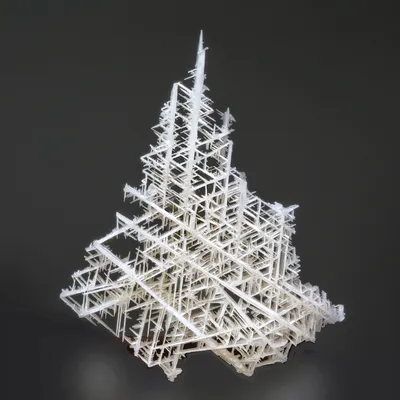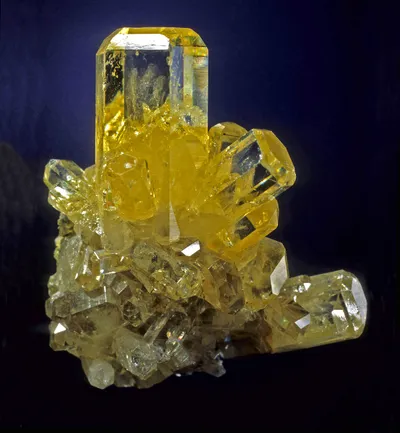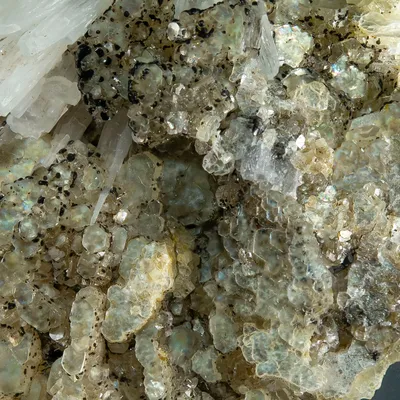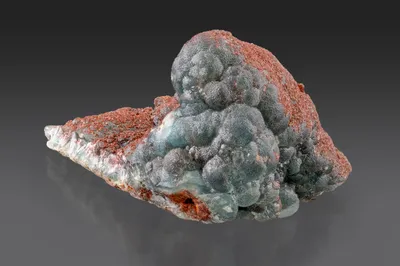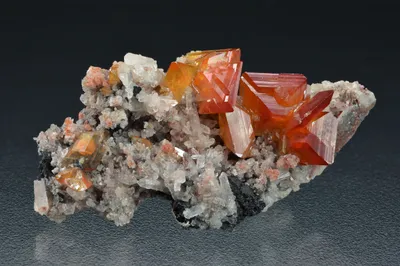Mineral Species
Melanotekite
Type Locality
No
Composition
Pb2Fe3+2Si2O9
Crystal System
Orthorhombic
Status at Tsumeb
Confirmed
Abundance
Very rare
Distribution
Second oxidation zone
Paragenesis
Supergene
Entry Number
Species; TSNB235
General Notes
Melanotekite is an accessory mineral associated with the important second oxidation zone find of alamosite in the early-1970s (Medenbach and Schmetzer 1975; Southwood 2021a).
The location from which the specimen described by Medenbach and Schmetzer (1975) was recovered is not known with certainty. A fine specimen of the alamosite / melanotekite association was figured by Keller (1984), however, and attributed to 28 Level. Further examples of the lead silicate paragenesis were collected from the East 9 Pillar on 31 Level (Keller and Dunn 1986; Keller and Innes 1986).
Melanotekite occurs mainly as small spherules (to c. 1 mm), very dark green to greenish-black, on anglesite or on / with other lead silicate minerals (notably alamosite). Extremely rarely, it occurs as crystals of c. 1 mm on leadhillite.
Keller and Bartelke (1982) included melanotekite in two rare mineral parageneses inferred for the lead silicates. Simplified versions of these sequences are as follows; for the complete version please see Keller and Bartelke (1982; page 146, sequences R/1 and R/2):
R/1: primary sulphides >> wulfenite >> alamosite >> (plumbotsumite, kegelite, melanotekite) >> "mineral T1" >> willemite >> mimetite >> larsenite >> leadhillite >> cerussite
R/2: primary sulphides >> quartz >> willemite >> queitite >> melanotekite >> "mineral T1" >> willemite >> larsenite
Keller and Dunn (1986) note that melanotekite is a component of the type assemblage for mathewrogersite, collected from the East 9 Pillar on 31 Level.
A specimen in the Pinch collection at Harvard (MGMH 2020.7.1972) comprises twinned disphenoidal crystals of adamantine, greenish-black melanotekite (to 0.5 mm) associated with willemite and anglesite.
Associated Minerals
alamosite; anglesite; cerussite; fleischerite; hematite; kegelite; larsenite; leadhillite; mathewrogersite; mendipite (?); mimetite; plumbojarosite; plumbotsumite; quartz; queitite; willemite; wulfenite
